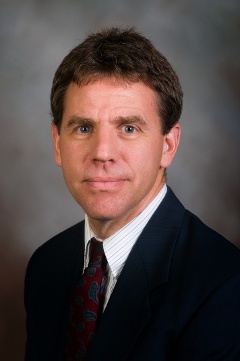ACADEMIA
Glenn Moglen's research questions urban development planning relating to flooding
Extreme weather can result in a violent act of nature, and in the past year much attention has been paid to the disastrous impacts of flooding during the spring and summer. For example, residents of cities and agricultural farmland found themselves at odds when the Army Corps of Engineers wrestled with opening floodgates to channel water away from the metropolitan areas of New Orleans and Baton Rouge in May of 2011, and instead direct the floodwaters to small Louisiana towns and farms.
Water became the enemy but it might have been an unnecessary role.
"The relationship between flood conditions and the spatial distribution of urban development has been poorly studied, often because of limitations on available data about stream flow or the common use of generic watershed models in urban hydrologic modeling," said Glenn Moglen, professor of civil and environmental engineering at Virginia Tech.
Moglen has spent years studying the issue of limiting impervious surfaces such as pavements that act as impenetrable materials to water. He has called for planners "to allow a safety margin when regulating land based on imperviousness, to steer development to already urbanized locations and away from relatively undisturbed locations, and to take advantage of situations that mitigate the deleterious effects of imperviousness on stream ecology."
Moglen's expertise garnered him an appointment as a special guest editor of an issue of the American Society of Civil Engineers' Journal of Hydrologic Engineering. And he has current funding from the Federal Emergency Management Agency to calculate flood magnitudes as part of the agency's efforts to modernize its maps.
In addition, Moglen and his former Ph.D. student, Alfonso I. Mejia, of Washington, D.C., who has now graduated from the University of Maryland, have developed a number of distinct models of urbanization that show patterns of impact from both sprawl and clustered development that reduce impacts to water resources. Their work was published in the April 2009 Journal of Hydrologic Engineering.
Moglen said their approach differed from previous studies because they looked at distributed effects within a watershed and not the aggregate results at the watershed outlet. They also focused on impacts generated by the spatial forms of urban patterns.
In the article, they cast doubt on land management policies promoting a fixed threshold of impervious surfaces. They show that this can result in the unintended consequence of favoring sprawl-type development. "Those within the planning community who espouse threshold-based controls on land development" should be concerned, they wrote.
In another study for the U.S. Geological Survey (USGS), Moglen andDorianne Shivers, of Takoma Park, Md., who also worked with Moglen when she was a student, used data from 78 urbanized stream gages across the U.S. for a study on urban flood frequency. They compared their models to previous results, and a key finding was a new method for estimating floods at ungaged sites using common, easily obtained data. This method eliminated the need to perform costly site visits in order to make urban flood estimates."
Their USGS study also indicated which mathematical models on peak discharges of water were the best performing -- an imperviousness distribution model and a population density distribution model. "These models depend on three predictors each: rural discharge, imperviousness or population density, and imperviousness or population density uniformity. The imperviousness or population density predictor serves to scale up the rural discharge, and the imperviousness or population density uniformity predictor scales down the discharge. This uniformity predictor quantifies the homogeneity of the development in a watershed," they concluded.
Moglen, who holds a Ph.D. in civil engineering from the Massachusetts Institute of Technology, works in the university's National Capital Region. He spent a year in the office of surface water at the U.S. Geological Survey in Reston, Va., while on a sabbatical during the 2003-04 academic year. He also spent approximately one year as a visiting research scientist at the National Weather Service, National Oceanic and Atmospheric Administration, in Silver Spring, Md., during 1995-96.
The College of Engineering at Virginia Tech is internationally recognized for its excellence in 14 engineering disciplines and computer science. The college's 6,000 undergraduates benefit from an innovative curriculum that provides a "hands-on, minds-on" approach to engineering education, complementing classroom instruction with two unique design-and-build facilities and a strong Cooperative Education Program. With more than 50 research centers and numerous laboratories, the college offers its 2,000 graduate students opportunities in advanced fields of study such as biomedical engineering, state-of-the-art microelectronics, and nanotechnology. Virginia Tech, the most comprehensive university in Virginia, is dedicated to quality, innovation, and results to the commonwealth, the nation, and the world.

